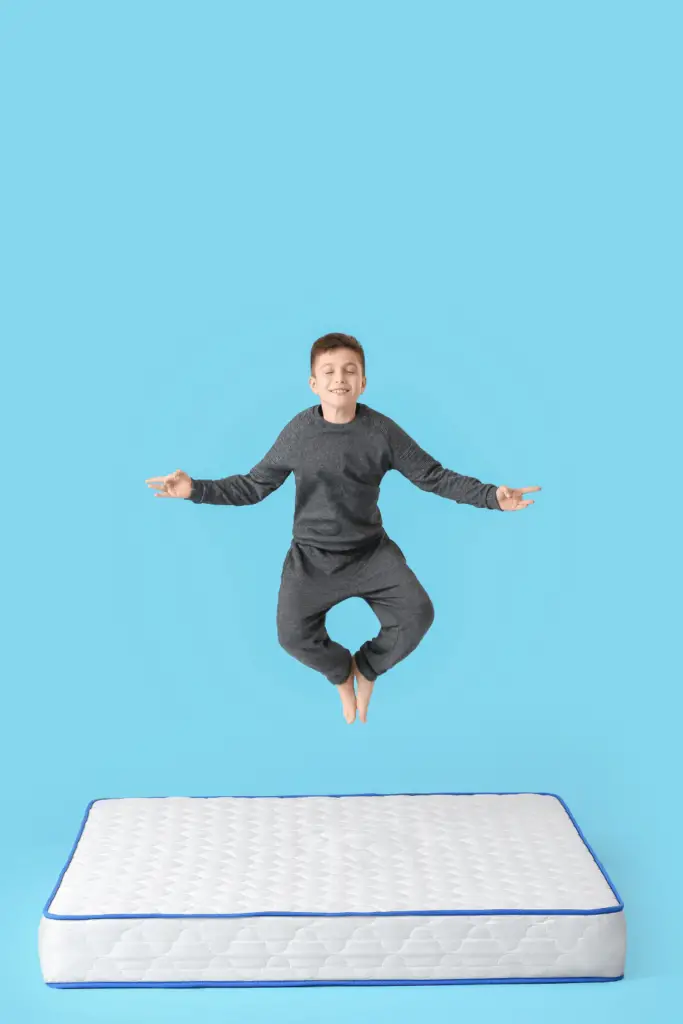Choosing The Right Mattress-In-A-Box: A Parent’s Guide
As a parent, you strive to provide the best sleep environment for your child. But with many mattress options available today, finding the ideal mattress for your kid might seem daunting. Mattresses-in-a-box, known for their convenience and affordability, have become increasingly popular in recent years.

If you’re uncertain about your choices, consider these factors when selecting a mattress-in-a-box for your child:
Comfort And Support
Whether you opt for an expensive or a cheap mattress in a box, one of the most critical aspects is ensuring it provides optimal comfort and support for your child. Children spend a considerable amount of time in deep, restorative sleep. A mattress properly supporting their body is essential for their growth and development.
Check if the mattress maintains its shape without excessive sagging. It should align the spine and alleviate pressure points. Memory foam and latex mattresses are often excellent choices for contouring.
Sleeping Position
When evaluating options, consider your child’s primary sleeping position, but remember these are general guidelines, and personal comfort also plays a significant role. A slightly softer mattress for side sleepers might help relieve pressure on the shoulders and hips, whereas stomach sleepers generally benefit from a firmer mattress to prevent excessive spinal arching.
Back sleepers often need a balance of support and cushioning to maintain proper spinal alignment. It’s also important to consider that as children grow, their preferred sleeping position and mattress firmness needs might change. Therefore, choosing a mattress that offers a good balance of comfort and support is vital, and one with a zoned backing can be remarkably adaptable to various sleeping positions.
Body Type
Your child’s body type and weight are crucial in determining the appropriate mattress for your kid’s bedroom makeover. Heavier children may find soft mattresses uncomfortable as they sink too deep and hit the hard layer below. In such cases, a thicker mattress with ample cushioning is ideal, offering the necessary support without compromising comfort.
Conversely, lighter children may benefit from a softer, more conforming mattress. This type of mattress adapts to kids’ smaller frames, ensuring proper spinal alignment and pressure relief, which contributes to a restful sleep.
However, it’s important to remember that these are general recommendations, and the ideal mattress firmness can also depend significantly on personal comfort preferences. Every child is unique, and what might be comfortable for one child may not be for another.
As children grow and develop, their comfort needs and preferences can change. Therefore, it’s helpful to involve your child in the decision-making process, ensuring that the mattress feels comfortable and meets their needs.
Allergies
Allergies in children can significantly impact their sleep quality and overall health. Therefore, look for items with mattress certifications to know which are designed to minimize exposure to allergens and promote a clean sleeping environment is essential. Natural latex and plant-based foams are hypoallergenic and resist dust mites and mold, common triggers for allergic reactions.
Moreover, a mattress cover made from natural fibers like cotton, wool, or bamboo enhances breathability. It offers a soft, soothing surface, contributing to your child’s more restful and comfortable sleep. These materials, being sustainable and eco-friendly, also contribute to a healthier environment in your home.
Durability
Kids are rough on beds, so durability is vital. Avoid ultra-soft memory foam that retains impressions easily. Look for dense foams or latex materials that offer resilience. Reinforced edges also prevent premature sagging along the sides. Since your child will use this mattress for many years, ensure the quality can stand the test of time.
Value
Mattresses-in-a-box are usually cheaper upfront, saving on delivery fees and sales commissions common in traditional purchases. Advancements in mattress technology and materials mean these mattresses now match the comfort and durability of store-bought options, ensuring quality without compromising on cost. This makes them a smart investment for those seeking quality sleep experiences on a budget.
Trial Period
One of the major perks of purchasing a mattress-in-a-box online is often a lengthy, risk-free trial period, which can vary between manufacturers. This goes the same with the terms and conditions of each brand’s trial period.
Typically, this allows your child to test the mattress for a period ranging from a few weeks to 100 nights, ensuring it meets their unique sleep needs and preferences. During this period, the mattress can be fully evaluated for comfort, firmness, and support, which are crucial for your child’s growing body.
The return process is usually straightforward if the mattress doesn’t provide the expected comfort and support. However, it’s important to understand the specific return policies of the retailer or manufacturer, as they can vary in terms of return shipping costs, refund procedures, and conditions for return.
Conclusion
Selecting the perfect mattress for your child ensures they enjoy restful, restorative sleep. Carefully evaluate comfort, support, sleeping position, body type, allergies, durability, value, and trial period as you assess mattress-in-a-box options for your child. The right mattress fosters healthy sleep habits, benefiting their growth and development.






